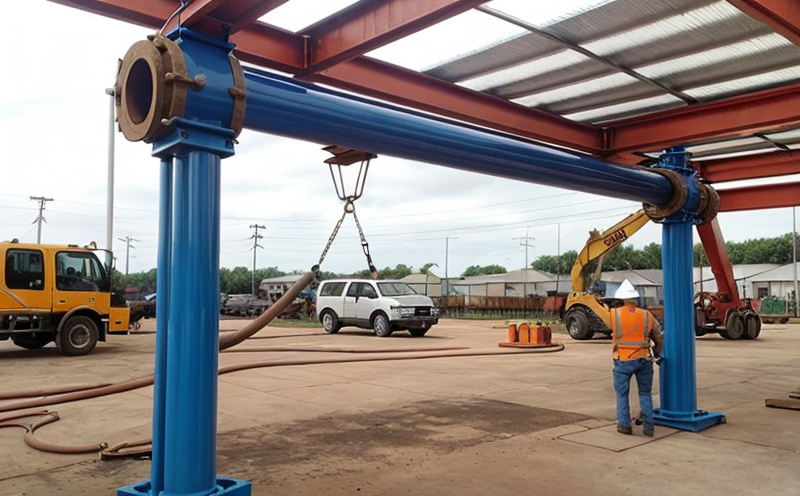Pipe lifting device inspection
The inspection of pipe lifting devices is a critical task within the lifting equipment and crane sector. Ensuring that these devices meet the highest standards of safety and reliability is essential for preventing accidents and ensuring compliance with international regulations.
These devices are used in various industries, including construction, oil and gas, mining, and manufacturing. The primary purpose of a pipe lifting device is to safely lift pipes or other heavy objects from one location to another. The inspection process ensures that these devices can withstand the stresses they encounter during their operation.
The inspection typically involves several key steps: visual examination, load testing, pressure testing (where applicable), and non-destructive testing methods such as ultrasonic testing and magnetic particle inspection. Each step is designed to identify potential flaws or weaknesses in the device that could lead to failure under operational conditions.
Visual examinations are conducted by trained inspectors who look for any visible signs of damage, wear, or corrosion. Load testing involves applying known loads to the lifting device to ensure it can handle its intended capacity without failing. Pressure testing is used when the lifting device is involved in hydraulic systems, ensuring that there are no leaks or other defects.
Non-destructive testing methods provide an internal assessment of the lifting device's integrity without causing any damage. Ultrasonic testing uses high-frequency sound waves to detect flaws within the material, while magnetic particle inspection looks for surface and subsurface discontinuities using magnetic fields.
| Test Method | Description | Application |
|---|---|---|
| Visual Examination | Inspecting the device for visible damage or wear. | All lifting devices during initial inspection and periodic checks. |
| Load Testing | Applying known loads to ensure the device can handle its capacity. | After repair, replacement of components, or after a certain period of use. |
| Pressure Testing | Testing for leaks in hydraulic systems. | Used when the lifting device is part of a hydraulic system. |
| Ultrasonic Testing | Detecting internal flaws using high-frequency sound waves. | To ensure the integrity of critical components. |
| Magnetic Particle Inspection | Likening surface and subsurface defects in ferromagnetic materials. | Identifying flaws that could lead to failure under stress. |
The acceptance criteria for these inspections are based on international standards such as ISO 13758, EN 1092-1, and ASME PCC-1. These standards provide the framework for conducting comprehensive inspections that ensure lifting devices meet safety and operational requirements.
Regular inspection of pipe lifting devices is crucial to maintaining workplace safety and compliance with regulatory requirements. By adhering to these rigorous testing protocols, organizations can minimize risks associated with heavy lift operations and extend the service life of their equipment.
Industry Applications
- In construction, pipe lifting devices are used for moving large sections of pipes from storage areas to installation sites.
- In the oil and gas sector, these devices facilitate the handling of heavy pipes during well completion operations.
- Within mining operations, they assist in transporting long lengths of pipes required for infrastructure development.
- The manufacturing industry uses pipe lifting devices for moving raw materials between different stages of production.
Why Choose This Test
- Ensures compliance with international safety standards such as ISO and ASME.
- Promotes workplace safety by identifying potential flaws before they lead to failures.
- Extends the service life of lifting devices through regular maintenance recommendations based on inspection findings.
- Saves costs associated with downtime due to accidents or equipment failure.
- Supports sustainability goals by optimizing resource use and minimizing environmental impact.
- Improves operational efficiency by ensuring that lifting operations are conducted smoothly without disruptions from unsafe equipment.
Environmental and Sustainability Contributions
The inspection of pipe lifting devices plays a role in promoting environmental sustainability. By identifying and addressing potential issues early, these inspections help prevent accidents that could lead to spills or leaks. This proactive approach ensures that materials are handled safely and efficiently, reducing the risk of environmental contamination.
Additionally, by extending the service life of lifting devices through regular inspection, organizations can reduce waste generation and resource consumption associated with premature replacement of equipment. This contributes to a more sustainable approach to operations, aligning with broader corporate sustainability initiatives.





